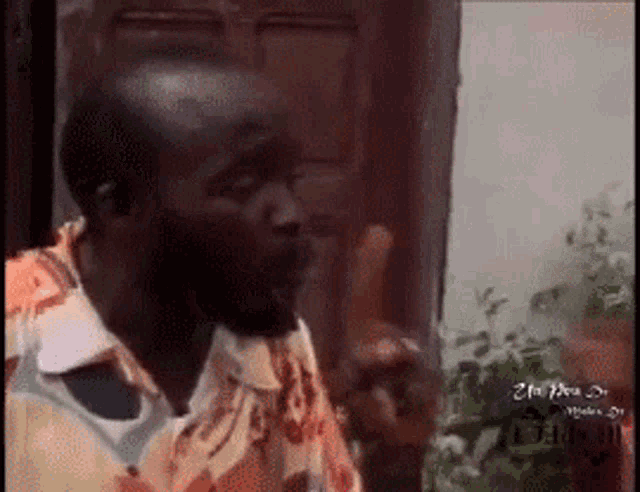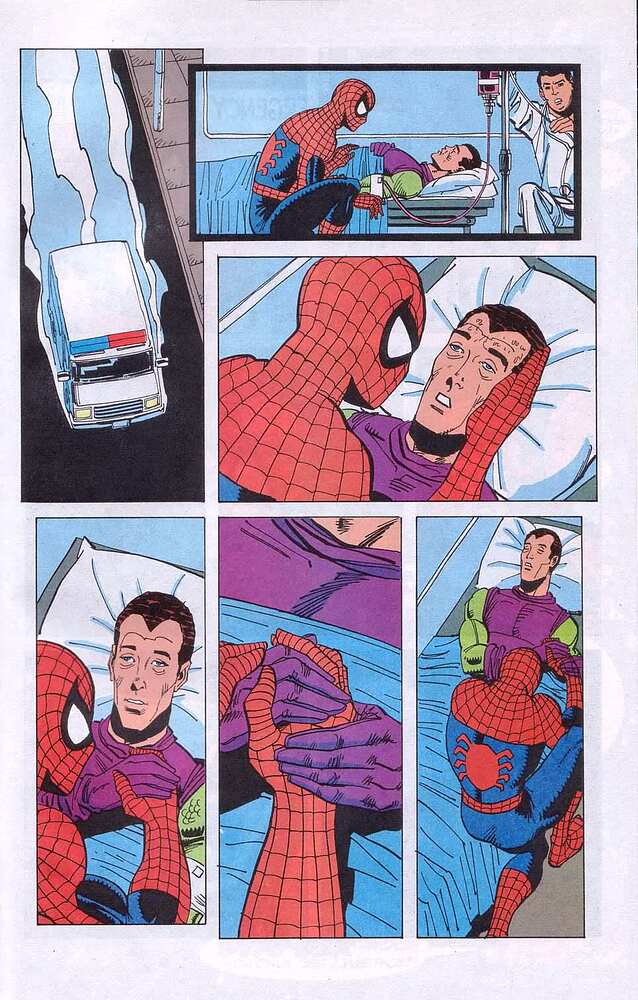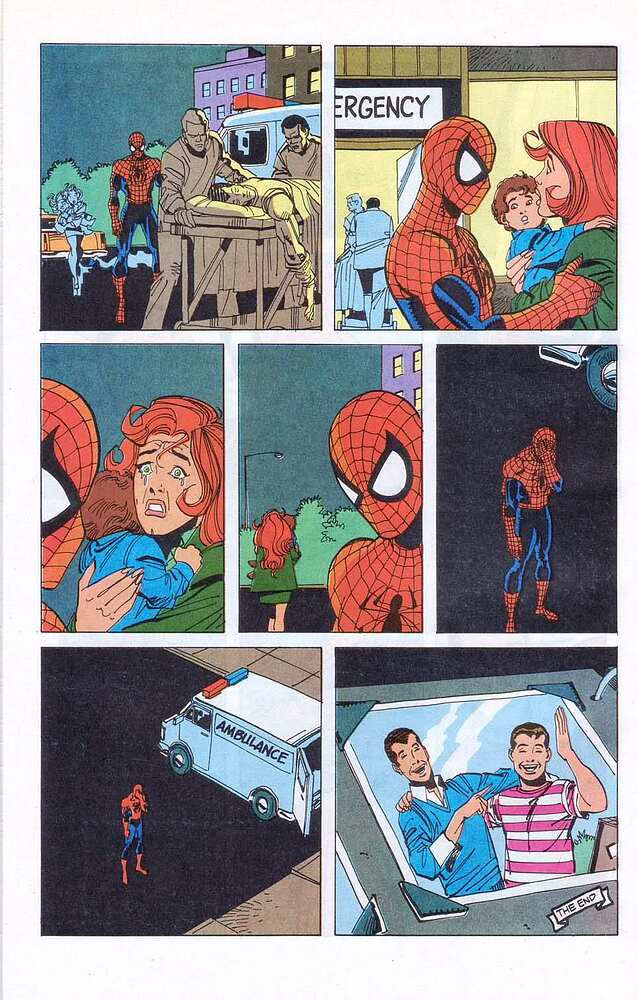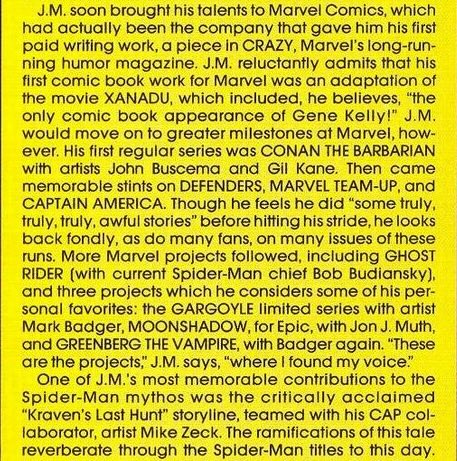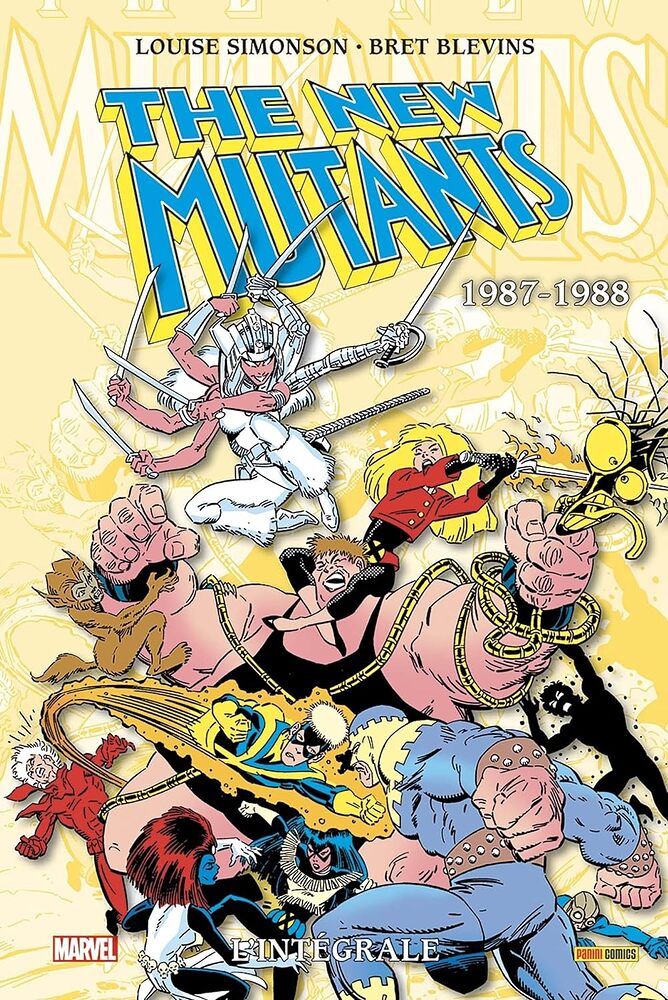Miller qui avait intentionnellement laissé de la place dans les cases parce qu’il présumait que Claremont allait être prolixe niveau dialogues, sauf que celui-ci a fait le choix inverse en découvrant les planches (ne pas les « gâcher » avec des tartines de textes). Chris Claremont l’avait évoqué lors d’une séance de questions/réponses sur Reddit.
"I really wanted to do something with Frank, and conveniently I had a car. I was taking him and some people up the PCH from San Diego to L.A. where were were going to a post-Con event. And somewhere along the way we got caught in a huge tailback (which is to say, a traffic jam.) because even though this was 30+ years ago, Customs and Immigration was looking for illegal aliens. So they shut down I-5. We’re sitting there in this huge tailback with, with the Marine Corps Base on one side of the road and the San Onofre nuclear facility on the other side of the road, and we’re maybe 100 feet above, and some numb nuts had built a three reactor complex between I-5 and the high tide mark…not the smartest thing to do in a part of the world that’s subject to earthquakes. But hey, wasn’t my power company, wasn’t my nuclear plant, and what the hell you’ve got the Marines just around the corner to evacuate everyone…but we’re sitting there, and I just started pitching the story. Frank goes “eh, I don’t want to draw a story of this guy hacking and stabbing people for four issues” and I said “that’s all right, neither do I.” Then both of us started talking about Japanese culture and philosophy and Frank really loved it, and I really loved it, and Logan really loved it. One thing led to another and by the time we got up to L.A. he wanted to see specifically what I had in mind, but, conceptually speaking, he was hooked. Me too.
The first plot I sent him was 23 pages of typing for a 22-page story. When I write a plot, especially with someone I haven’t worked with before, I throw in everything: motivations, dialogue, choreography, what everyone’s wearing. etc. It’s utterly ridiculous. Quick aside: Years later an artist I was working went to Walt Simonson and said “Look at this! He’s doing a page of descriptions on a page of text! How the hell am I going to fit all this on a page of art? Who does he think he is? Alan Moore?” I said, “No. Alan Moore used smaller font and less spacing…he’d write twice as much.” You have to be able to pull the actual visual stuff out of the mess, and Frank pulled them out.
By the time we got to issue 4, the climax of the whole thing, we were on the phone for 20 minutes, spitballing moments, scenes, how I wanted things to go, and I was scribbling notes. When I typed them up it was about two-thirds of a page, and that was the plot. Both Frank and I knew who the character was, we knew the situation, we knew who everybody was in the cast. We didn’t need any of the rest of it. All we needed to know was the seqence of events to get to the end.
The real joke was the visual style of the series where he would leave these big open spaces in the panels and say “Claremont’s a blabbermouth, I’ll give him room for copy that won’t affect the actual storytelling.” And I sat there and I looked at that myself like, “Holy cow! These visuals are breathtaking. No way in hell am I going to cover them up with words.” So I just threw everything out that popped into my head to write on the page and cut it down to what I hoped were the fairest and most eloquent essentials. So with both of us playing to what we thought were the other guy’s weaknesses, we ended up playing to our strengths.
Frank was and is a brilliant storyteller, of whom I’m intensely jealous of because he can draw and I can’t. The trick is finding a way to play to your partner’s strength, and we lucked out on that one.
The neat thing about Logan is he really is short. That’s the joke. There’s a scene in one issue when Kitty looks at him and because she’s gone through a growth spurt and she’s taller than he is after 200 issues where they’re the same size. Now she’s a head taller, and for her, it’s fun. For him, it’s like “Ugh, I knew it was coming.”
A lot of other storytellers miss the opportunity to play to that. The ideal is if you’re going to be a lead character, you have to be tall and powerful. We had to keep telling John Buscema he’s short because John will look at it and think, “oh, he’s a hero, he’s got to be tall!” No. Shrink him down. Logan plays against type. He’s unexpected. That’s what make him and Nightcrawler so much fun. You look at Nightcrawler and think “Demon.” But no. He’s the antithesis of that. You look at Logan and think little guy, then you get punched through the wall! He is a person in conflict because half of him wants to be the beast. The other half wants to be the noble spirit.
The beast part of him fell in love with Phoenix. The noble warrior in him fell in love with Mariko. They’re both legitimate. They’re both conflicted.
That to me is what’s so much fun about these characters. It’s not that Wolverine is the meanest badass in the world and Nightcrawler is a demon; it’s their people. They have conflicts. A sense of humor. Logan has a sense of irony.
What people forget or don’t seem to pay attention to anymore (because it happened 30+ years ago) is he went up to Rachel and said “don’t do this” and Rachel said, “Selene is evil. I am going to kill her” and Logan says “no, you are going to murder. That’s different. You can’t do that.” Then Rachel says, “well if you want to stop me, you’ll have to kill me.” She’s running a bluff, figuring he won’t. But he does.
Because there are lines you do not cross. And that’s it. He knows who and what he is. He will do pretty near anything to prevent those he loves from following that path. As Al Milgrom and I presented in the Kitty Pryde/Wolverine miniseries, he nearly sacrificed his life to save her from being possessed by the villain and being turned into a master assassin. He will pay any price to save those he cares for, including the responsibility of murdering them. That makes him fun. (An inappropriate word.) But that’s what Frank and I were going for in the miniseries.
You first see Mariko in issue 1. Frank drew that image himself in pencil and ink because he wanted it to be right. And I remember looking at it for the first time like “Holy cow…this is exquisite.” But then you move a few pages into the book after her husband has beaten her bloody, and her face is swollen and she’s got black eyes and bruises all over the place (and also because Joe Rubinstein’s inks were significantly different from Frank’s) and you look at her and it’s like “What the heck happened to her!?” That’s the first emotional punch that Logan takes in this. The first cast of his cascade down the slope to what he thinks of his disgrace, from which he must rise up to save the day. This is the kind of thing that with the right artist and the right story, you can evoke the right emotions. In 4 issues, in less than 100 pages, we made a movie."
